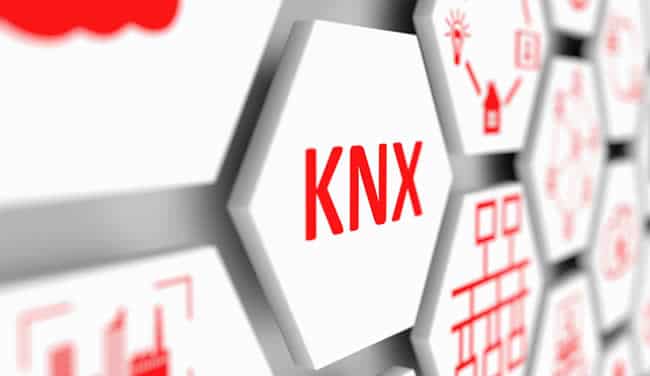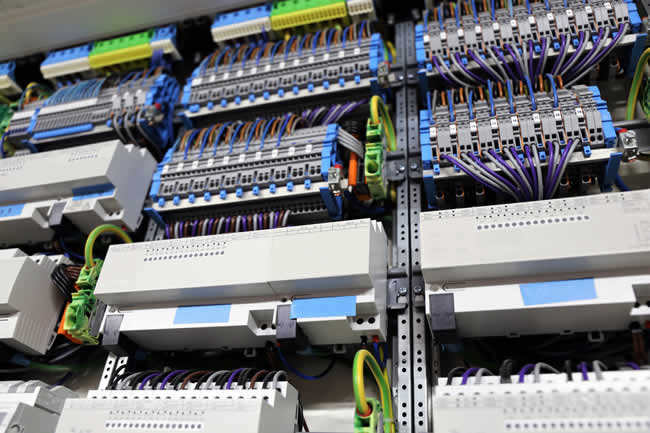KNX is the only global open standard for building automation and home automation, or domotics. In 2020, KNX celebrates its 30th birthday. Although KNX has been around for quite some time, the adoption of the open standard communication protocol keeps expanding.
KNX is a proven and highly interoperable home and building automation technology with guaranteed backward compatibility and future-proofing innovations
Most people know KNX from smart home automation and in-room automation whereby rooms can be broadly defined and really are spaces or zones (e.g., meeting rooms, lobbies of hotels).
However, KNX continues to expand beyond the building and the pure in-house and in-room component, as tackled below. The innovations by the KNX Association and its members continue to lead to new applications, capabilities, and integrations in residential and commercial buildings but also beyond thanks to enhanced connectivity and interoperability with non-KNX systems.
The inherent interoperability and openness of KNX on its own, along with the smart solutions and systems that companies build upon the KNX architecture, and the interoperability with other systems, are some of the reasons why the future of KNX looks bright. Connecting ecosystems of various providers and solutions is vital here.

KNX in an IoT world
Various IoT ecosystems for smart homes, smart buildings, smart communities, smart offices, and even smart cities become part of this broader picture as well with standardization and interoperability also remaining essential in the evolution of IoT and the various parts of our built environment where it’s used.
The formation of a working group in the Zigbee Alliance, called Project Connected Home over IP, whereby Amazon, Apple, Google, and the Zigbee Alliance with its several leading smart home automation members joined forces, is recent proof of this need. And, of course, standards issues continue to hinder the broader IoT market.
KNX IoT, which the KNX Association launched in 2016, enables us to connect the KNX ecosystem to the newer IoT systems that popped up in recent years, at the same time allowing for more complex and tailored configurations.
So, as the KNX landscape evolves, the domains in which KNX is used, increase. Consequently, KNX shows up beyond the typical types of applications and environments in which it is well-known, while its global footprint and installed base grow in these more recent areas as well.
With newer solutions such as KNX IoT, KNX Secure (cybersecurity and cyber resilience are a must in our built environment), and improvements in the latest versions of ETS, the engineering tool software to install KNX systems in facilities, the KNX ecosystem will continue to expand. The demand for smart homes and buildings grows, and ever more applications and smart, feature-rich devices hit the market.
Moreover, the technology’s place is developing in the context of our changing overall built environment that needs to respond to ever more challenges and needs, certainly with the impact of the COVID-19 pandemic on the way we will design our spaces. If there is one area where COVID impacts digital transformation on the longer term it’s precisely on the level of the built environment and how we live.
We cover this more in-depth in an interview where you can read how Schneider Electric brings KNX to the next level of smart buildings and communities, including the smart grid and energy management, with its SpaceLogic approach to extend the capabilities of KNX.
Where KNX is used today – KNX across applications
In another interview, building management expert Jean Commeignes explained the importance and adoption of KNX in room control and light control in these days of IoT.
The interview zoomed in on the Light & Room Control certification of EcoXpert (Schneider Electric’s partner program). Partners who are certified for Light & Room Control are active in both home automation and building automation.
And it’s here that KNX is one of the leading standards with room control consisting of many functions (and whereby a room could be a room in a home, or any limited part of a building really).
Among the applications for which the KNX bus system and KNX components (sensors, controllers, actuators) are used today we find:
- Lighting control;
- Shutter (solar shading) and blinds control;
- HVAC (heating, ventilation, air conditioning);
- Energy management and smart metering;
- Audio/video (AV) control;
- Security systems control (smoke detection, anti-intrusion systems, door communication, emergency lighting,…)
- Air quality monitoring and control;
- Etc.
By opening up KNX beyond its in-house and in-room aspect by integrating it with other systems, additional applications come in reach, and that’s precisely what is happening as the market evolves.

KNX across the globe
Although KNX is a global open standard, it’s not used in the same degree everywhere. Jean explained how the open system was dominant in many European countries and the Middle East while gaining a larger footprint in Latin America and the Asia Pacific region.
KNX, among others, has a large installed base in China, where it is by far the leading communication protocol in the smart homes and light commercial market (in 2007, KNX became a standard in China). In recent years, Vietnam became an important KNX market, and in India, KNX is doing well too.
KNX leads the home solutions market in Germany (where electrical contractors are trained in KNX at school) and also is dominant in France and The Netherlands. In the UK, it accounts for over a quarter of communication protocols. The KNX ecosystem is also very active in, among others, Switzerland, Sweden, Norway, Spain, and Italy, with new economies outside Europe on the rise.
As demand for building automation and energy efficiency in many ‘new’ economies is growing, KNX is expanding at different speeds, depending on local factors. However, in general, in these new economies, there is also a lot of innovation and competition. The dominant position of KNX in several European countries is partially due to the roots and history of KNX.
KNX is present in around 190 countries through a network of KNX (installation) partners. End March 2020, the KNX Association, announced the opening of its 500th certified KNX training center (in Cameroon). There are such training centers in over 70 countries. Moreover, there are KNX National Groups in over 40 countries (such groups are important to promote the standard and work with the ecosystem in these focus markets).

